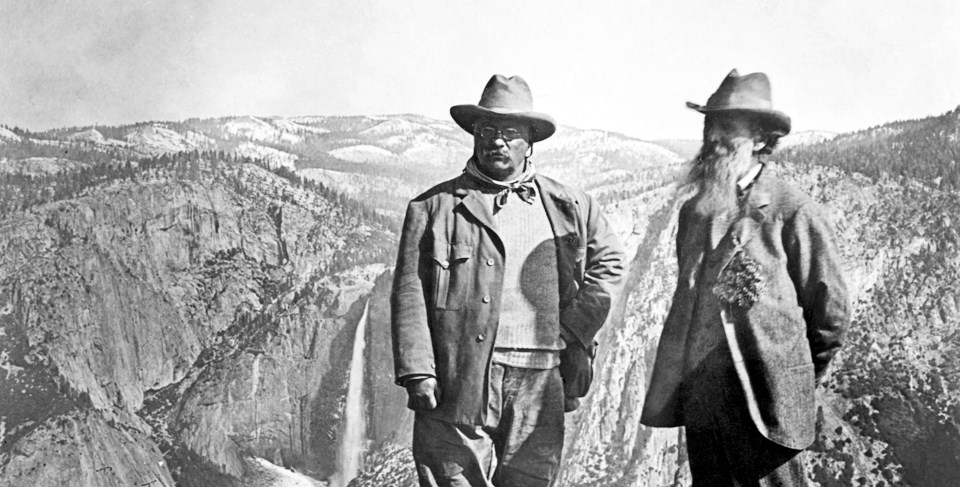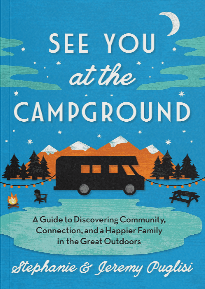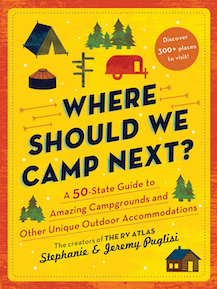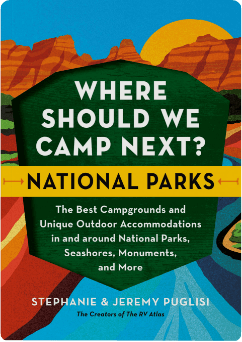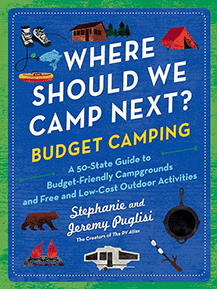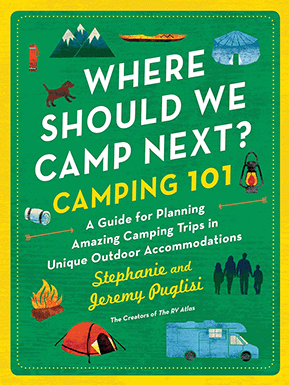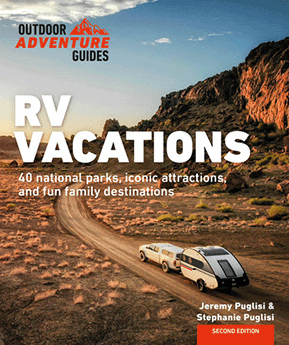Over the past few years we have created a series of podcasts about the history of American camping. We have published in-depth episodes on the Army Corps of Engineers and their amazing system of campgrounds, on the past, present, and future of the National Forest Service, on the Civilian Conservation Corps and the massive impact that they have had on outdoor recreation in America. And now, on the latest episode of the RV Atlas we are continuing this look at the history of camping with an episode about the birth of the National Park Service.
Our guest on all four of those podcasts has been Casita Dean May–our friend and a longtime RV Atlas podcast correspondant. Dean is a camping fanatic and history buff–so he has been the perfect guide on all four of these historical episodes.
On Today’s episode of The RV Atlas podcast Dean walks us through key moments in the birth of the NPS. Moments that matter from its prehistory, its birth, and its formative years.
To listen to Jeremy interview Dean about the National Park Service and the key historical figures that brought it into being–click on the media player above–or subscribe to The RV Atlas podcast wherever you get your shows.
***
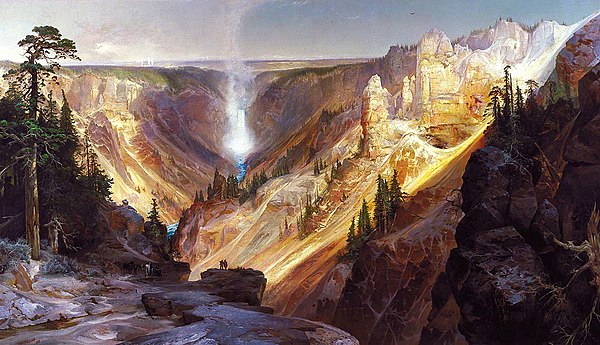
Thomas Moran: The Grand Canyon of the Yellowstone
Here are some of the key moments that Dean highlights in this episode of the podcast–this outline of the podcast episode comes directly from Dean’s notes:
- George Catlin, an American painter came up with the idea of a national park in 1832 while traveling the American plains.
- The federal government designated Hot Springs National Reservation the first “national reservation” in 1832.
- By the 2nd half of the 1800s, a growing number of people, notably the naturalist and conservationist John Muir began calling on the federal government to protect those scenic places from exploitation.
- In 1864, the United States Congress identified Yosemite Valley as an important land area and gave it to California to manage as a state park.
- In 1871 an expedition to the Yellowstone region led by Ferdinand V. Hayden and sponsored by the U.S. Geological Survey included the photographer William Henry Jackson and the painter Thomas Moran.
- Upon the expedition’s return to the East, Jackson’s images of Yellowstone and, especially, a series of spectacular large paintings of the Grand Canyon and Yellowstone and other wonders there executed by Moran enthralled the American public.
- President Ulysses S. Grant declared Yellowstone the first national park in 1872.
- Some naturalists and others have argued that there is evidence that indicates that the creation of Yellowstone was predated by the creation of Bogd Khan Mountain National Park in Mongolia, which may date from as early as 1778.
- In 1875, Congress created Mackinac National Park, managed by the army that had a presence on the island.
- In 1890, Congress established Sequoia and Yosemite National Parks.
- In 1899, Mount Rainier received national park status.
- In 1902, Crater Lake National Park was established.
- The naturalist, John Muir, believed lands in the Yosemite Valley in California were being exploited and he convinced President Theodore Roosevelt to camp there with him in 1903.
- President Roosevelt spent 3 days camping in the Yosemite Valley. They spent hours talking around the campfire regarding the exploitation and challenges of the Yosemite Valley.Yosemite was under full federal control by 1906. John Muir is known as “the father of the national parks.
- He was influenced by Henry David Thoreau and Ralph Waldo Emerson. Muir also founded the Sierra Club in 1892. He served as its first president until his death in 1914.
- In 1906, Congress passed the Antiquities Act. It grants the president the authority to set aside historic landmarks on public lands. As a result, President Roosevelt takes swift action. In 1906, Devil’s Tower became the first national monument.
- Between 1901 and 1909, President Roosevelt created 5 national parks. He was known as the “conservation president.”
- In 1910, Glacier National park was established.
- For many years, the national parks were coordinated by the Departments of War, Agriculture, and/or Interior (not always effectively).
- In 1914, Stephen Mather, a wealthy businessman, wrote to the Secretary of the Interior about the poor condition of parks he had visited that summer.
- The Secretary suggested that Mather work to improve the system by joining the Department of the Interior in Washington D.C.
- Two years later, through the efforts of Mather and his assistant, Horace Albright, Congress passed what was dubbed the “Organic Act,” which authorized the formation of the NPS. The signing of the Organic Act of 1916 by Woodrow Wilson–is the moment when the National Park Service was born.
- The Organic Act of 1916 gathered the 14 national parks and 21 national monuments into one agency, the NPS.
- Stephen Mather was named the first NPS director.
- Horace Albright was the 2nd NPS director
- This act declared that the purpose of the NPS was “to conserve the scenery and natural historic objects and the wildlife therein and to provide for the enjoyment of the same in such manner and by such means as will leave them unimpaired for the enjoyment of future generations.”
- In 1933, President Franklin D. Roosevelt further streamlined the system by consolidating all parks, monuments, and cemeteries under the NPS.
- Historic Sites Act of 1935 – allowed the federal government to give historic properties protected status.
- In 1964, President Lyndon B. Johnson signed the Wilderness Act into law emphasizing a “parks for the people” philosophy that included accessible parks in more urban areas.
- In 1970, Congress with the General Authorities Act declared “that the National Park System, which began with the establishment of Yellowstone National Park in 1872, has since grown to include superlative natural, historic, and recreation areas in every region…and that it is the purpose of this Act to include all such areas in the System….”
- In 1990, the Native American Graves Protection and Repatriation Act required museums including those in national parks to return excavated remains to their cultural descendants.
- The founding of Yellowstone National Park [in 1872] began a worldwide national park movement. Today more than 100 nations contain some 1,200 national parks or equivalent preserves.
- The NPS has to balance its goals that can be contradictory at times: preserving the parks for the future and allowing the public to enjoy them.
- Today the NPS has over 318 million visitors per year.
- The NPS employs approximately 20,000 individuals and utilizes more than 300,000 volunteers.

